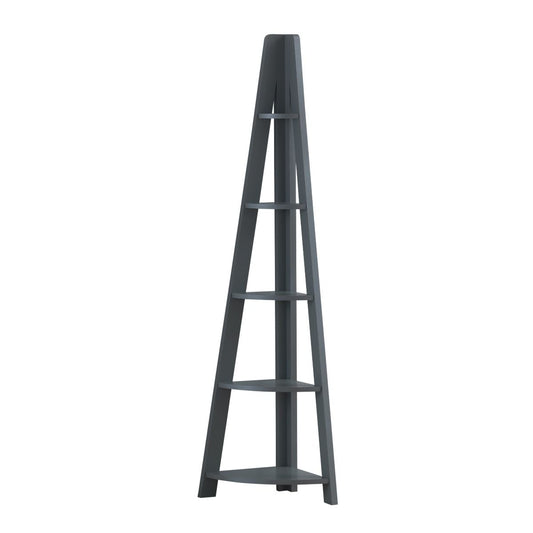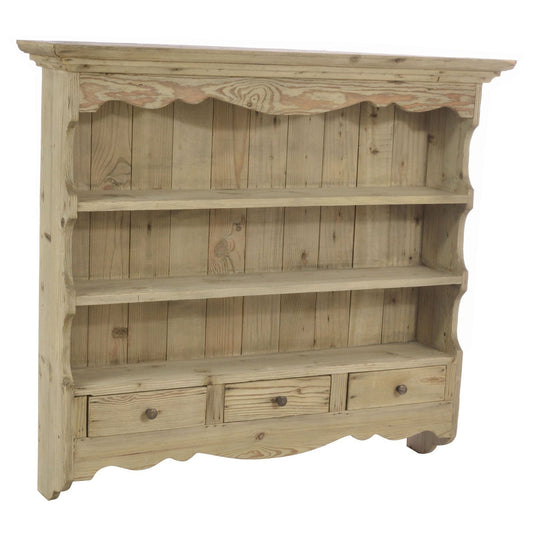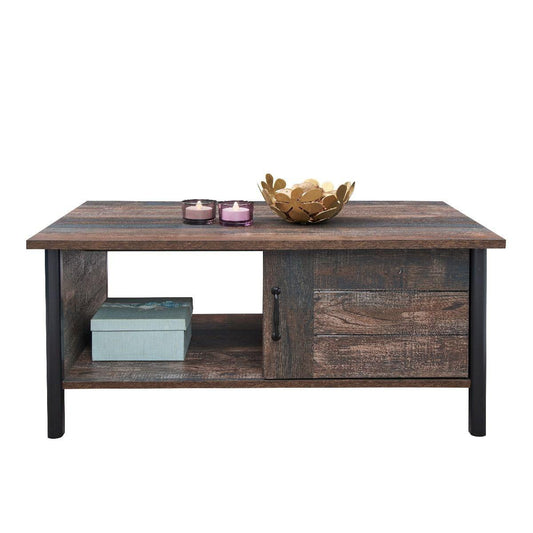Living Room Furniture

Living Room Furniture
The living room is the heart of the home, a place where you relax, entertain guests, and spend quality time with your loved ones. And what makes a living room truly functional and comfortable? The right furniture, of course! In this article, we will explore different types of living room furniture and provide some useful tips and insights to help you make the best choices for your space.
Understanding Different Types of Living Room Furniture
When it comes to furnishing your living room, it's essential to understand the different types of furniture available. Let's dive into some key pieces that can transform your space.
Creating the perfect living room involves more than just throwing a few pieces of furniture together. It requires careful consideration of each item's style, functionality, and how it fits into the overall design scheme. By understanding the different types of living room furniture, you can make informed decisions that will enhance the beauty and functionality of your space.
Sofas and Couches
A sofa or couch is undoubtedly the centerpiece of any living room. Whether you prefer a traditional or modern design, there are countless options to suit your style. Consider the size, shape, and material of the sofa, as it will set the tone for the entire room.
When selecting a sofa, think about the number of people who will be using it regularly. If you have a large family or frequently entertain guests, a sectional sofa might be the perfect choice. On the other hand, if you have limited space, a loveseat or a compact sofa with a chaise lounge can provide both comfort and style.
Additionally, think about the material of the sofa. Leather sofas offer a timeless and sophisticated look, while fabric sofas provide a cozy and inviting feel. Consider factors such as durability, ease of cleaning, and how the material complements the other furniture in the room.
Coffee Tables
A coffee table not only offers a place to set down your cup of joe but also acts as a functional and decorative element in your living room. It's important to choose a coffee table that complements the style of your sofa and provides ample surface space for books, remote controls, and other essentials.
When selecting a coffee table, consider the shape and size that best suits your needs. Rectangular coffee tables are versatile and can accommodate multiple seating areas, while round or oval tables can soften the sharp lines of your furniture. If you have limited space, consider a coffee table with built-in storage to keep your living room clutter-free.
Furthermore, think about the material and finish of the coffee table. Wood tables offer a warm and natural look, while glass tables create a modern and sleek aesthetic. Metal tables can add an industrial touch to your living room, while marble tables exude elegance and luxury.
TV Stands and Entertainment Centers
With the rise of streaming services and home theaters, TV stands and entertainment centers have become a crucial part of living room furniture. These pieces not only hold your television but also provide storage for media devices, games, and DVDs. Consider the size, storage capacity, and cable management options when selecting the perfect TV stand or entertainment center for your living room.
When choosing a TV stand or entertainment center, measure the dimensions of your television to ensure a proper fit. Consider the number of shelves or drawers you need to store your media devices and accessories. Cable management is also essential to keep your living room organized and free of tangled cords.
Additionally, think about the style of the TV stand or entertainment center. If you prefer a minimalist look, a wall-mounted TV stand can save space and create a sleek aesthetic. On the other hand, if you have a large collection of DVDs or gaming consoles, a freestanding entertainment center with closed storage might be more suitable.
Bookshelves and Display Cabinets
If you're a book lover or enjoy displaying your favorite collectibles, bookshelves and display cabinets are a must-have. These pieces can add personality and character to your living room while providing storage and organization. Choose a design that complements your existing furniture and consider the height and width of the unit to ensure it fits in your space.
When selecting bookshelves or display cabinets, think about the amount of storage you need. If you have an extensive book collection, floor-to-ceiling bookshelves might be the perfect solution. On the other hand, if you have a smaller collection or want to showcase specific items, a display cabinet with glass doors can add an elegant touch.
Consider the style and material of the bookshelves or display cabinets. Wood bookshelves offer a classic and timeless look, while metal shelves can create an industrial or modern vibe. Glass cabinets can showcase your collectibles while protecting them from dust and damage.
By carefully selecting and arranging different types of living room furniture, you can create a space that reflects your personal style and meets your everyday needs. Remember to consider factors such as size, shape, material, and functionality to ensure each piece enhances the overall aesthetic and functionality of your living room.
Choosing the Right Furniture for Your Living Room
Now that we have explored the different types of living room furniture, let's delve into the essential factors to consider when choosing the right pieces for your space.
Assessing Your Space
Before making any furniture purchase, it's crucial to evaluate your living room's available space. Measure the area to determine the size of furniture that will fit comfortably without overcrowding the room. Consider the placement of doors, windows, and other architectural features to ensure the furniture placement is functional and visually appealing.
When assessing your space, it's also important to consider the flow of traffic in the room. Will there be enough space for people to move around freely? Will the furniture obstruct any walkways or create obstacles? These are important questions to ask yourself to ensure that your living room remains practical and easy to navigate.
Additionally, take into account the natural lighting in your living room. If you have large windows that bring in ample sunlight, you may want to choose furniture that won't block the light or cast shadows. On the other hand, if your living room lacks natural light, you might consider furniture with lighter colors and reflective surfaces to help brighten up the space.
Identifying Your Style
Your living room should reflect your personal style and taste. Whether you prefer a classic, contemporary, or eclectic look, choose furniture that complements your desired aesthetic. Consider the color scheme, patterns, and textures that will harmonize with your existing decor.
When identifying your style, it can be helpful to create a mood board or gather inspiration from interior design magazines and websites. This will give you a clearer vision of the overall look and feel you want to achieve in your living room. You can then select furniture pieces that align with your chosen style, whether it's sleek and minimalist or cozy and rustic.
Remember, your living room is a space where you and your family will spend a significant amount of time, so it's important to choose furniture that not only looks good but also makes you feel comfortable and at home.
Considering Functionality
While aesthetics are essential, don't forget about the functionality of your living room furniture. Think about how you will use the space and what features are most important to you. If you have children or pets, consider furniture with durable materials and stain-resistant fabrics. If you frequently entertain, opt for seating arrangements that allow for easy conversation and comfort.
Another important aspect to consider is storage. Living rooms often serve as a gathering place for various activities, so having furniture with built-in storage solutions can help keep your space organized and clutter-free. Look for coffee tables with hidden compartments, ottomans with storage space, or entertainment centers with shelves and cabinets.
Additionally, think about the flexibility of your furniture. Will you need pieces that can be easily rearranged or moved to accommodate different activities or gatherings? Consider furniture with lightweight frames or modular designs that can be adjusted to suit your changing needs.
Lastly, don't forget about the comfort factor. Your living room furniture should be inviting and cozy, allowing you and your guests to relax and unwind. Test out different seating options to ensure they provide adequate support and cushioning. Pay attention to the quality of materials used, such as the padding and upholstery, to ensure long-lasting comfort.
By considering the functionality of your furniture, you can create a living room that not only looks great but also serves your everyday needs.
Material Choices for Living Room Furniture
When selecting living room furniture, another critical consideration is the material it's made from. The material not only affects the appearance but also the durability and maintenance requirements of the furniture.
Wood Furniture
Wood furniture is timeless and adds warmth and elegance to any living room. From solid hardwood to engineered wood, there are various options available. Decide whether you prefer the natural beauty of solid wood or the versatility of engineered wood, which offers better resistance to humidity and warping.
When it comes to solid wood furniture, oak is a popular choice due to its durability and rich grain patterns. Oak furniture can withstand the test of time and is known for its sturdiness. Other options include cherry wood, which has a warm reddish hue, and walnut wood, which has a dark and luxurious appearance.
Engineered wood, on the other hand, is made by combining different layers of wood veneers with adhesives. This type of wood furniture is more resistant to warping and cracking, making it a practical choice for areas with fluctuating humidity levels. Additionally, engineered wood is often more affordable than solid wood, making it a budget-friendly option for those looking to furnish their living room without breaking the bank.
Metal Furniture
Metal furniture is known for its sleek and contemporary look. It can create a visually striking contrast in your living room. Consider materials like stainless steel, brass, or wrought iron. Stainless steel furniture, with its clean and shiny appearance, is a popular choice for modern and minimalist living rooms. Brass furniture, on the other hand, adds a touch of elegance and sophistication with its warm golden tones.
Wrought iron furniture, with its intricate designs and sturdy construction, can add a touch of old-world charm to your living room. It is often used for outdoor furniture due to its durability, but can also be a unique and eye-catching choice for indoor spaces.
One advantage of metal furniture is its lightweight nature, making it easy to move around and rearrange your living room whenever you desire. Additionally, metal furniture is often resistant to stains and spills, making it a practical choice for households with children or pets.
Glass Furniture
Glass furniture can add a touch of sophistication and modernity to your living room. From glass coffee tables to display cabinets, this transparent material can create an illusion of space and light. Glass furniture is often associated with contemporary design styles, but it can also complement traditional or eclectic interiors.
When choosing glass furniture, consider the thickness and type of glass used. Tempered glass, for example, is more durable and less likely to shatter compared to regular glass. It is a safer option, especially for households with young children.
Keep in mind that glass furniture may require regular cleaning to maintain its sparkle. Fingerprints, smudges, and dust can be more visible on glass surfaces, so it's important to keep them clean and free from any marks. However, with proper care and maintenance, glass furniture can be a stunning addition to your living room.
Maintaining and Cleaning Your Living Room Furniture
Once you've invested in the perfect living room furniture, it's essential to take care of it properly. Regular maintenance and cleaning will prolong the lifespan of your beloved pieces and keep them looking their best.
When it comes to maintaining and cleaning your living room furniture, there are several tips and tricks that can help you keep it in pristine condition for years to come.
Routine Cleaning Tips
Regular dusting and vacuuming are essential to keep your furniture free from dirt and debris. Dust can accumulate on both wood surfaces and upholstery, so it's important to use a soft cloth or brush to remove it. By doing so, you not only keep your furniture looking clean but also prevent the buildup of allergens that can affect the air quality in your living room.
For wood surfaces, consider using a microfiber cloth or a feather duster to gently remove dust. Avoid using abrasive materials that can scratch the surface. If your furniture has intricate carvings or crevices, you can use a soft brush to reach those hard-to-reach areas.
When it comes to upholstery, vacuuming is key. Use a brush attachment to gently remove any dust or pet hair that may have settled on the fabric. Be sure to vacuum both the front and back of cushions, as well as the crevices between them. This will help maintain the overall cleanliness and appearance of your furniture.
Always follow the manufacturer's cleaning instructions to avoid damaging the materials. Different types of wood and upholstery may require specific cleaning methods or products. By following these guidelines, you can ensure that your furniture stays in top shape.
Dealing with Stains and Spills
Accidents happen, and when they do, it's important to act quickly to prevent stains from setting in. Whether it's a spilled drink or a mishap with food, here are some steps you can take to minimize the damage:
1. Blot the spill gently with a clean cloth. Avoid rubbing the stain, as it may spread and become more difficult to remove. Instead, apply gentle pressure to absorb the liquid.
2. If the spill has left a stain, consult the furniture's care guide for specific instructions on stain removal. Different materials may require different cleaning methods. It's important to follow these guidelines to avoid further damage.
3. In case of tougher stains or if you're unsure about how to proceed, it's best to seek professional help. Professional cleaners have the expertise and specialized products to tackle stubborn stains without causing harm to your furniture.
Long-Term Maintenance and Care
While routine cleaning is important, long-term maintenance and care are equally crucial in preserving the beauty and integrity of your living room furniture.
1. Protect your furniture from excessive sunlight. Prolonged exposure to direct sunlight can cause fading and discoloration. Consider using curtains, blinds, or UV-protective window films to shield your furniture from harmful UV rays.
2. Extreme temperatures and humidity can also damage your furniture over time. Avoid placing your pieces near heating vents, radiators, or air conditioning units. Additionally, consider using a dehumidifier in areas with high humidity to prevent moisture-related issues such as mold or warping.
3. If you have pets, it's important to take extra precautions to protect your furniture. Consider using furniture covers or throws to prevent pet hair, scratches, and stains. Regularly vacuuming or using a lint roller on your upholstery can also help keep it pet-hair-free.
4. Regularly polish wood furniture to maintain its shine and protect it from everyday wear and tear. Choose a polish that is suitable for the type of wood you have and follow the instructions carefully. Applying protective treatments, such as wax or oil, as recommended by the manufacturer, can also help extend the life of your wood furniture.
By following these maintenance and cleaning tips, you can ensure that your living room furniture remains in excellent condition for years to come. Remember, proper care and attention will not only preserve the beauty of your furniture but also enhance the overall ambiance of your living space.
Sustainable and Eco-Friendly Living Room Furniture Options
If you're conscious of your environmental footprint, choosing sustainable and eco-friendly furniture options for your living room is a great way to make a positive impact.
Reclaimed Wood Furniture
Reclaimed wood furniture is made from salvaged wood, preserving valuable resources. These pieces often feature unique characteristics and a rustic charm that adds character to your living room.
Bamboo Furniture
Bamboo is a fast-growing and renewable resource, making it an excellent option for eco-conscious individuals. Bamboo furniture is durable, lightweight, and offers a natural aesthetic that can enhance any living room.
Recycled Metal Furniture
Recycled metal furniture is not only environmentally friendly but also highly durable and stylish. This furniture is often made from repurposed materials like iron or aluminum, reducing the demand for new resources.
Budgeting for Living Room Furniture
Lastly, let's discuss budgeting for living room furniture. Decorating your living room doesn't have to break the bank - it's all about making informed and smart choices.
Setting a Furniture Budget
Before you begin your search, determine how much you're willing to spend on living room furniture. This will help you narrow down your options and prevent impulse purchases that might strain your finances.
Saving Money on Furniture Purchases
There are several ways to save money when purchasing living room furniture. Consider shopping during sales or clearance events, exploring second-hand options, or even DIY projects that allow you to refurbish and repurpose existing furniture.
Investing in Quality Pieces
While it's important to stick to your budget, remember that investing in quality furniture can save you money in the long run. Well-made pieces tend to be more durable, saving you from costly replacements down the line.
In conclusion, choosing the right living room furniture can transform your space into a haven of comfort and style. By understanding the different types of furniture, considering your space and style, and selecting sustainable options within your budget, you can create a living room that truly reflects your personality while providing a welcoming environment for all who enter.
- Choosing a selection results in a full page refresh.

















